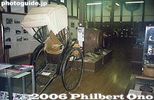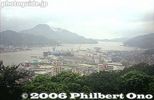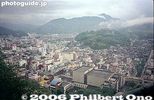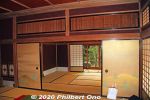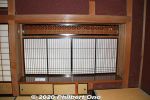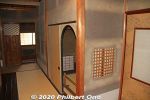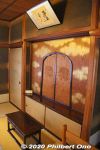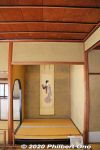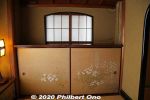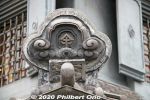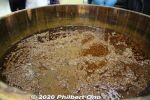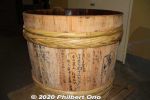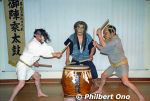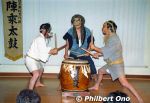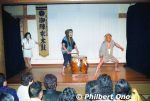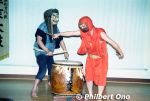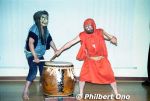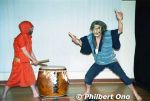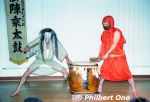 Image search results - "Wajima" Image search results - "Wajima" |
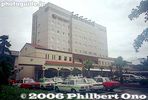
Uwajima Station
|
|

Uwajima Castle tower (Important Cultural Property), Ehime Prefecture.
|
|
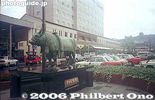
Fighting bull statue in front of Uwajima Station.
|
|

Castle tower
|
|
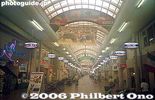
Shopping arcade
|
|
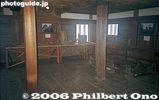
Inside Uwajima Castle tower.
|
|
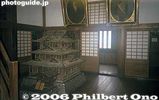
Inside castle tower
|
|
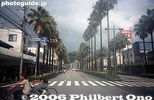
Main road in Uwajima
|
|
|
|

View from top floor
|
|
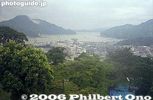
View from top floor
|
|
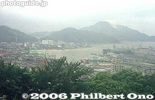
View of Uwajima city from top floor
|
|
|
|
|
|
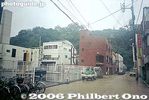
Uwajima Castle on the hill
|
|

Sightseeing map of Kawajima town in Saitama Prefecture. Looks like it has a lot to see.
|
|
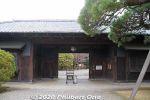
Entrance to Toyama Memorial Museum (遠山記念館).
|
|
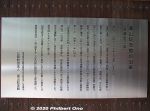
About Toyama Memorial Museum (遠山記念館).
|
|
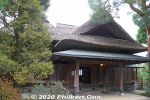
Toyama Memorial Museum (遠山記念館) has this thatched-roof home built in 1936 by Kawajima-native Toyama Gen'ichi (遠山元一 1890–1972), the founder of Nikko Securities. It was a home for his mother.
|
|
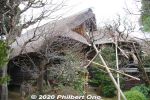
The home has three wings, this wing witth a thatched roof is designed like a farmhouse.
|
|

This West Wing part of the house is desiged like a tea ceremony room.
|
|
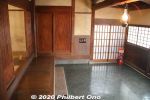
Entrance hall has this rare stone tiles on the floor.
|
|
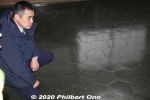
Entrance hall has this rare stone tiles on the floor.
|
|
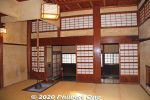
Farmhouse room.
|
|
|
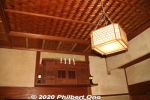
Shinto shrine altar near the fancy ceiling.
|
|
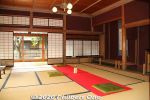
Japanese-syle room in the West Wing.
|
|
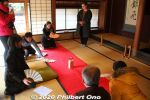
We tried playing a traditional fan-tossing game called tosenkyo (投扇興). You toss a folding fan at a small target on a small block.
|
|
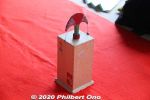
Called "cho" (butterfly), the target is shaped like a gingko leaf. The number of points you earn depends on how well you knock down the target.
|
|
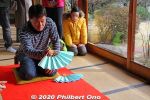
Our tosenkyo instructor takes aim.
|
|
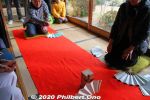
It's quite hard for beginners to even knock it down because the fan tends to fly in unpredictable directions.
|
|
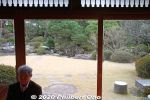
The imported glass was also expensive.
|
|
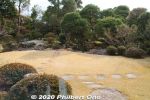
Garden
|
|
|
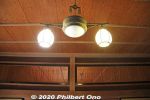
Very rare Yaku-sugi wood ceiling from Japanese cedar trees found on Yakushima island in Kagoshima Prefecture. Beautiful wood grain.Such wood comes from trees as old as 1,000 years. Now illegal to cut down yaku-sugi trees. 屋久杉
|
|
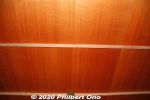
Straight-line wood grain on another ceiling.
|
|

Tokonoma alcove.
|
|
|
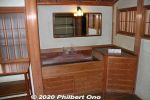
Bathroom sink.
|
|
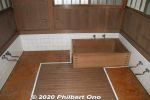
Bath tub
|
|
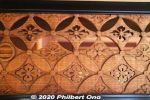
Transom
|
|
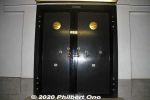
Storehouse door, fireproof.
|
|
|
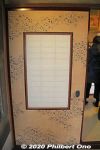
Fusuma sliding door.
|
|
|
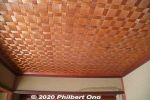
Fancy ceiling.
|
|
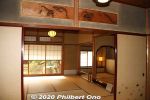
Tea ceremony room.
|
|
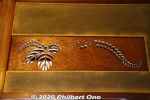
Transom with a paulownia design.
|
|
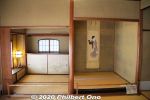
Tea ceremony room alcove.
|
|
|
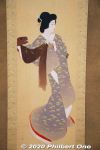
Scroll depicting a woman dancer with a lion head.
|
|
|
|

Tea ceremony room.
|
|
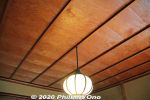
Very rare Yaku-sugi wood ceiling from Japanese cedar trees found on Yakushima island in Kagoshima Prefecture.
|
|
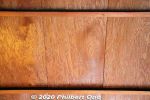
Very rare Yaku-sugi wood ceiling from Japanese cedar trees found on Yakushima island in Kagoshima Prefecture. Beautiful wood grain. Such wood comes from trees as old as 1,000 years. Now illegal to cut down yaku-sugi trees. 屋久杉
|
|
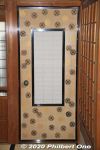
Fusuma sliding door.
|
|
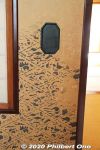
Fusuma sliding door.
|
|
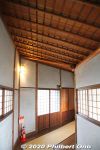
Corridor
|
|
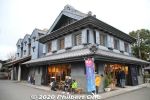
Kinbue Syoyu Park offers a factory tour of their soy sauce (shoyu) factory operated by Fueki Syoyu Brewing Co. (笛木醤油株式会社). Their shoyu products are sold under the "Kinbue" brand name (金笛). They've been in business since This traditional building houses a gift shop and restaurant.
|
|
|
|
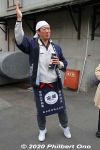
Our factory guide was Fueki Masatsugu, the 12th-generation proprietor of the shoyu brewing company.
|
|
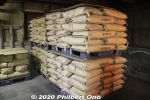
Soybeans
|
|
|
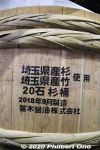
Kinbue also makes large wooden vats for shoyu making.
|
|

Fueki Masatsugu explains about a large vat of what will become soy sauce.
|
|
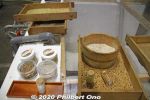
The ingredients used in making shoyu. Lots of soybeans and salt.
|
|
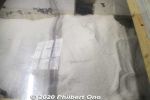
Lots of salt.
|
|
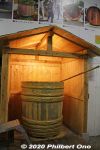
A sample vat that we could mix using a long stick.
|
|
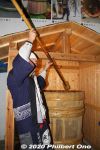
He showed us how to mix the vat.
|
|
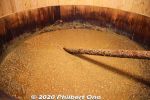
Inside the vat of fermenting shoyu.
|
|
|
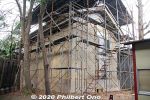
Old warehouse.
|
|
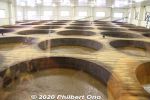
Large wooden vats where the soy sauce is fermented and aged.
|
|

What the vats look like down below.
|
|
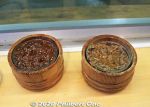
Different stages of fermenting. We could taste the difference.
|
|
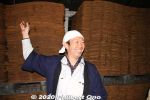
Waste materials from making shoyu.
|
|
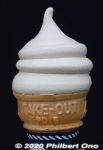
Shoyu soft-serve ice cream.
|
|

Senmaida in Shiroyone, Wajima is one of Japan's most famous terraced rice paddies. It's in a remote location (10 km from central Wajima), but very picturesque with the ocean (Sea of Japan) right below it. Senmaida literally means "One-thousand rice terraces."
|
|

The smallest rice terace is only 0.2 sq. meter. The land is very fertile and minimal fertilizer is required. Senmaida is one of the most picturesque and impressive spots on the Noto Peninsula.Address: 石川県輪島市白米町99-5
|
|

Volunteers plant and harvest the rice here. The rice paddies are owned by multiple owners who meet ownership requirements.
|
|

Designated as Globally Important Agricultural Heritage Systems (GIAHS).
|
|
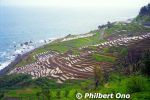
From Kanazawa Station, there are buses that go to Senmaida. Takes about 2 hours.
|
|
|
|
|
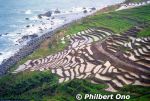
http://senmaida.wajima-kankou.jp/
|
|

写真提供:©石川県観光連盟
|
|

写真提供:©石川県観光連盟
|
|

写真提供:©石川県観光連盟
|
|

写真提供:©石川県観光連盟
|
|

写真提供:©石川県観光連盟
|
|

写真提供:©石川県観光連盟
|
|

写真提供:©石川県観光連盟
|
|

Senmaida in fall.写真提供:©石川県観光連盟
|
|
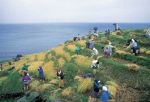
At Senmaida, harvesting rice.写真提供:©石川県観光連盟
|
|
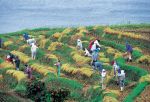
At Senmaida, harvesting rice.写真提供:©石川県観光連盟
|
|
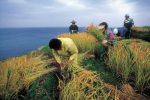
At Senmaida, harvesting rice.写真提供:©石川県観光連盟
|
|

Senmaida with candlelights during an event.写真提供:©石川県観光連盟
|
|
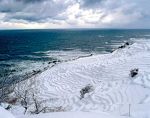
Senmaida in winter.写真提供:©石川県観光連盟
|
|

Wajima Asa-ichi Morning Market is quite famous in Noto Peninsula. Supposed to tbe one of Japan's Big Three Morning Markets. Originated in Heian Period. 輪島朝市
|
|

Wajima Asa-ichi Morning Market is held from 8 am to noon, closed on the 2nd Mon. and 4th Wed. of the month. Neither grand nor extraordinary, it is just a small street lined with stalls selling fruits, vegetables, seafood, and crafts.輪島朝市
|
|

Wajima Asa-ichi Morning Market sells lots of stuff including seafood. 輪島朝市Address: 石川県輪島市河井町朝市通り
Website: https://asaichi.info/
|
|
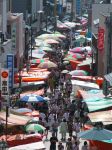
Wajima Asa-ichi Morning Market 写真提供:©石川県観光連盟
|
|
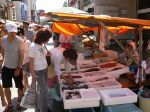
Wajima Asa-ichi Morning Market has lots of seafood.写真提供:©石川県観光連盟
|
|
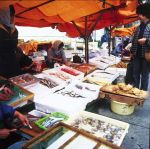
Wajima Asa-ichi Morning Market 写真提供:©石川県観光連盟
|
|
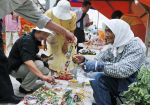
Wajima Asa-ichi Morning Market 写真提供:©石川県観光連盟
|
|

Wajima Asa-ichi Morning Market 写真提供:©石川県観光連盟
|
|

Wajima-nuri Kaikan (Wajima Lacquerware Hall 輪島塗会館). Making Wajima-nuri lacquerware (urushi). Wajima-nuri is very famous and the lacquer is known to be very durable. 輪島塗
|
|

Wajima-nuri lacquerware has been around for centuries. It is known to be high-end and expensive lacquerware. 輪島塗
|
|

Wajima has many nice lacquerware shops. Walk around town and drop in to see the fine lacquerware for sale. You will gasp at some of the prices. (A pair of lacquered chopsticks can cost ¥20,000.) 輪島塗
|
|

It is said that Wajima lacquerware dates back some 1,000 years. It takes 75 to 124 meticulous steps to produce Wajima lacquerware. 輪島塗There are four basic stages: Procuring and preparing the wood, shaping the wood into the desired form, lacquering, and decoration.
|
|
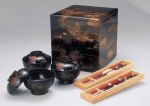
Wajima-nuri lacquerware写真提供:©石川県観光連盟
|
|
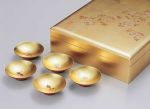
Lacquerware with gold leaf.写真提供:©石川県観光連盟
|
|
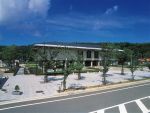
Wajima Museum of Urushi Art is the only museum in Japan specializing in lacquerware. Besides Wajima-nuri, it also shows lacquerware from other parts of Japan. 石川県輪島漆芸美術館https://www.city.wajima.ishikawa.jp/art/
写真提供:©石川県観光連盟
|
|
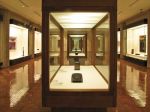
石川県輪島漆芸美術館写真提供:©石川県観光連盟
|
|

Sodegaura is a scenic place to stroll around. 鴨ヶ浦
|
|

Sodegaura 鴨ヶ浦
|
|

Sodegaura 鴨ヶ浦
|
|

Washing fishing boat at Wajima port.
|
|

Wajima Kiriko Art Museum exhibits floats from the Noto Kiriko Matsuri. Kiriko are tall lanterns. The festival is held in many locations on the Noto Peninsula during July to Oct. 輪島キリコ会館Address: 石川県輪島市マリンタウン6-1
Open 8 am–5 pm
Admission charged.
|
|

Wajima Kiriko Art Museum. Kiriko lantern floats can be as tall as 15 meters and weigh 2 tons. They are pulled around town. 輪島キリコ会館https://wajima-kiriko.com/en/
|
|
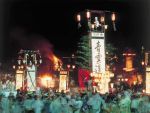
Wajima Taisai Festival with kiriko floats. Wajima has four kiriko festivals. Most kiriko lantern festivals in the Noto Peninsula are held at night. 輪島大祭https://www.hot-ishikawa.jp/kiriko/en/kiriko/wajimataisai.php
写真提供:©石川県観光連盟
|
|
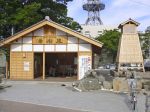
Wajima onsen foot bath.写真提供:©石川県観光連盟
|
|
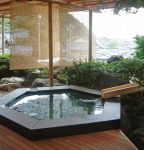
写真提供:©石川県観光連盟
|
|

Gojinjo-Daiko is powerful, crazied drumming performance by several men donning demon masks and wigs. They are based in a small village called Nabune in Wajima where Gojinjo-daiko originated.Legend has it that their drumming and fierce-looking masks drove off the invading forces of Uesugi Kenshin, ruler of Echigō Province (Niigata Pref.) during the Warring States Period in the 16th century.
写真提供:©石川県観光連盟
|
|

Old Wajima Station before it closed in 2001 when the Noto Railway line between Wajima and Anamizu Stations was abolished. It's now a Michi-no-Eki Wajima Roadside Station selling local produce.
|
|
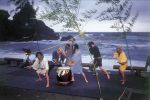
The taiko drummers wear fearsome masks while drumming. Gojinjo daiko commemorate the day when villagers in Nabunemachi in Wajima, Ishikawa Prefecture used crude and frightening masks made of tree bark and seaweed dangling from their heads.写真提供:©石川県観光連盟
|
|
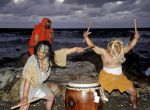
They beat taiko drums when they invaded Lord Uesugi Kenshin's base camp. They used sickles and hoes to chase away the army who was enroute to capture Nanao Castle. The villagers lived happily afterward.写真提供:©石川県観光連盟
|
|
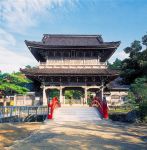
Sojiji Soin Temple in Wajima used to be one of the headquarters temple for the Soto Zen Buddhist sect until a fire razed most of the temple in 1898. 總持寺祖院This is the Sanmon Gate.
写真提供:©石川県観光連盟
|
|
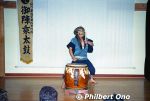
They also perform indoors for free on weekend evenings (or every evening in summer) at Wajima Kiriko Art Museum.
|
|
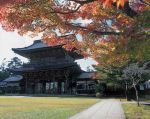
The new headquarters temple was transferred to the one in Yokohama in 1911. Sojiji Soin Temple is now a regional headquarters temple (betsuin).写真提供:©石川県観光連盟
|
|

Gojinjo-Daiko drummers.
|
|

Sojiji Soin Temple.写真提供:©石川県観光連盟
|
|
|
|
|
|
|
|
|
|
|
|
|
|
|
|
|
|

Old video of gojinjo-daiko drummers performing in Wajima.
|
|
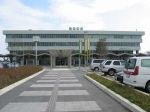
Noto Airport写真提供:©石川県観光連盟
|
|
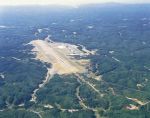
Noto Airport写真提供:©石川県観光連盟
|
|

Two Tokikuni-ke (¥520) thatched-roof homes in Sosogi. Built in 1831, Kami Tokikuni-ke was the residence of a wealthy farmer descended from Tokikuni who was related to the Taira Clan. The house has stately rooms and a garden. 上時国家写真提供:©石川県観光連盟
|
|

Kami Tokikuni-ke home. Both Tokikuni-ke homes are National Important Cultural Properties.
|
|

Inside Kami Tokikuni-ke home.写真提供:©石川県観光連盟
|
|

Inside Kami Tokikuni-ke home.
|
|

Tokikuni-ke home.写真提供:©石川県観光連盟
|
|

A short walk away is the less grand Shimo-Tokikuni-ke, the residence of a branch family of the Tokikuni. 下時国家
|
|

In Wajima, Sosogi Coast is a National Place of Scenic Beauty with craggy and unusual rock formations. Sights include Window Rock (Mado-iwa) here. 窓岩Location: https://goo.gl/maps/KJcj2X6BmeETgTE57
|
|
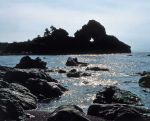
Mado-iwa (Window Rock) has a through hole in the rock. Rough waves have eroded the Sosogi Coast into fantastic rock formations largely made of rhyolite.写真提供:©石川県観光連盟
|
|

Tarumi Falls flow directly into the ocean. 垂水の滝Sosogi Coast in Wajima is a scenic area of craggy and unusual rock formations. Sights include Window Rock (Mado-iwa) and Tarumi Falls.
|
|

In winter, strong winds blow Tarumi Falls upward so much that the water does not fall into the plunge pool. 垂水の滝Location: https://goo.gl/maps/WLYQ6LZaHR8E9h9d9
|
|
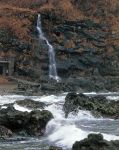
Tarumi Falls 垂水の滝写真提供:©石川県観光連盟
|
|
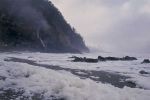
In winter, the Sosogi Coast is famous for Nami-no-Hana (wave flowers) which are bits of ocean foam that get blown around in the air like flowers.写真提供:©石川県観光連盟
|
|
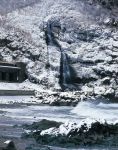
Tarumi Falls in winter. 垂水の滝写真提供:©石川県観光連盟
|
|
|
|
|
|








